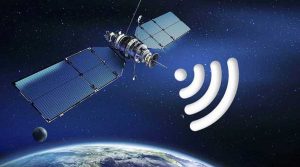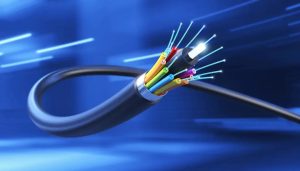First and foremost, you need to know what kind of home internet connection you have. The sort of internet service accessible to you at home. It depends on whether you have accessibility to fiber or the internet. It’s clear that those who live in rural or isolated places. May have fewer options when it comes to establishing an online presence. It’s possible that wireless broadband. Or satellite communications will be the sole means of communication. As there may be no fixed line options available. The situation gets more difficult since mobile broadband requires robust networks, such as 4G or 5G. Therefore, a mobile internet plan is not viable in regions with poor cell phone service.
The National Broadband Network is an Australian national retail open-access data network. That has been adopted by the majority of households, workplaces, and buildings. It is manage by NBN Co, a government-owned company. That oversees both the wired and wireless components of the network. This is due to the fact that other global connection types. Such as ADSL, are becoming obsolete as fewer service providers provide packages to new clients. That’s why there are so many NBN plans to choose from.
Even if some of its connections, like satellite, only allow limited access to fixed-line services. Different ISPs and geographic locations provide a wide range of internet access packages. In deciding on an Internet plan and service. It’s important to weigh a number of criteria. Including broadband speed or bandwidth, price, opportunity, dependability, and convenience.
Diverse Internet Connection Varieties:
Mobile Internet
Voice-over-Internet Protocol services are offer by several smartphone vendors. This takes advantage of a mobile network. Maybe a 4G or 5G one. A permanent and power-hungry modem is requiring for use of wireless broadband in the house. To access the Internet, all you need is a cell signal. And a few minutes to set up this wireless connection, which is superior. Putting in the modem is all that’s required. No complicated setup is necessary. Second, a data-only SIM plan with a predetermined data cap is the most common kind of mobile network. And mobile internet is perhaps the most well-known type of mobile service. The portable modem that comes with some mobile broadband contracts. Allows you to connect several devices to the internet. This can fill up the gaps in your home internet service. Or serve as a backup when you’re away from home.
Satellite
To get online in places where broadband is unavailable. Satellite internet is a good alternative because it relies on a modem. To do so, you’ll need a satellite dish on your building’s roof. And a modem or other suitable equipment in your house. Connecting to an ISP is as simple as installing a dish. And the satellite will transport data to and from their dish and the satellites ground stations.
Spymaster, a satellite internet service, is utilizing in outlying areas of Australia as part of the NBN. This method has the potential for sluggish internet and fewer viable options. You won’t be able to enjoy the same download rates as those offered by many landline providers.
Geostationary satellites, which can give reasonably high data rates to person customers. Are used to deliver modern standard consumer satellite Internet service. There are three key parts need for a satellite internet connection to function. Similar to a geostationary orbit, but in a lower or higher orbit around the planet. Gateway ground stations, which transport data from and to the satellites through radio waves. And additional subscriber-facing ground stations that provide antennas and receivers.

ADSL User with Asymmetric Data Rates (ADSL)
This innovation supersedes dial-up internet in terms of upload and download speeds on copper phone lines. It’s a kind of DSL (digital subscriber line) that enables for simultaneous speech. And data transmissions over a single wire without the interference. That might occur when the two use the same frequency. Bandwidth and bit rate in ADSL are deeming asymmetric.
They are more likely to be at the customer’s location than the other way around. As a result, this makes use of airwaves in a band. That isn’t suitable for conventional telephone comments. In most cases, ADSL can only be set up for locations close to an existing telephone exchange. Firstworldneeds.com provides detailed information to choose internet connection varieties and service providers. A distance of less than 4 km, but no more than 8 km in length. So long as the wire gauge used permits it.
ADSL is utilizing due to High-tech and commercial concerns. With the most widespread application being in residences. Here, in the noisiest region of the local loop, the uploading signal is at its weakest while the loudest region of the local loop is where the downloading signal is the strongest. One of ADSL’s biggest selling points is its low price. The copper phone lines owned by Tetra and Optus stretch for thousands of kilometers. Buried underground with only a DSL filter needed for lightning-fast internet connectivity.
Fiber Internet

In terms of speed, fiber-optic internet may offer up to 940 Megabits per second with little latency. Fiber-optic cable, which can transmit data at 70 percent the speed of light, is use here. When compared to conventional caves, these can withstand extreme weather and electrical interference.
The CenturyLink Fiber service facilitates rapid data transfers both ways. Play games and talk to loved ones through video chat without any hiccups. A two-hour high-definition movie may be download in seconds. Rather than the thirty minutes it would take to wait for a slower connection. Or far faster than the typical 20 Mbps download speed. Thin glass cables, known as optical fibers, are used to transport light signals. Then, you may twist them together to make cables.
Fibers are choosing over copper cable due to their greater reliable. And capacity for transmitting data over greater distances. Glass’ natural conductivity makes it unaffected by electromagnetic fields. There is also less potential for sending confused messages. The main drawback is the high price tag associated with laying optic fiber links across the country.
NBN solves this problem by integrating fiber optics with preexisting infrastructure. The fiber cables are high maintenance, but once installed they require little attention. Fiber optics is an advanced technology that uses light instead of electricity to transmit data.























![To Increase YouTube Subscribers Must Use These Service Provider [New]](https://businessleed.com/wp-content/uploads/2022/11/To-Increase-YouTube-Subscribers-Must-Use-These-Service-Provider-New-360x180.jpg)













